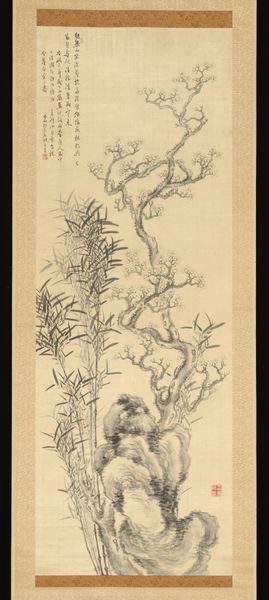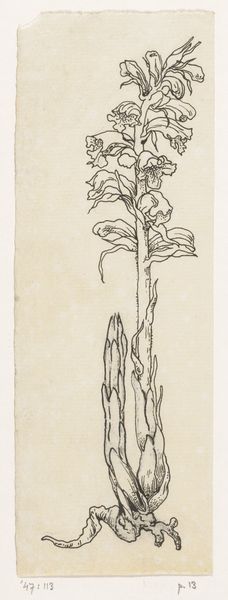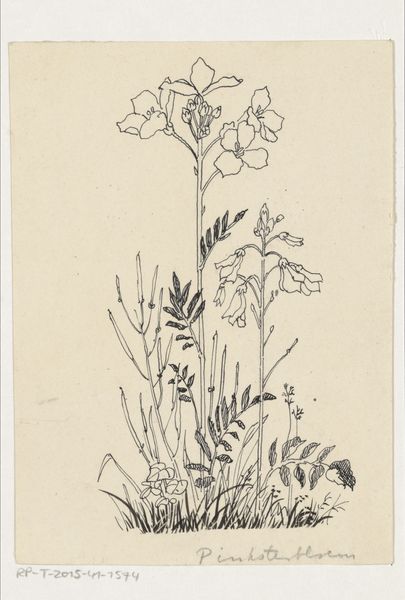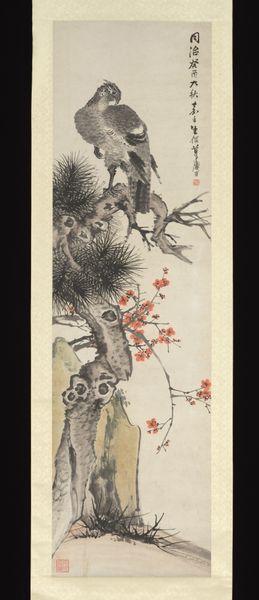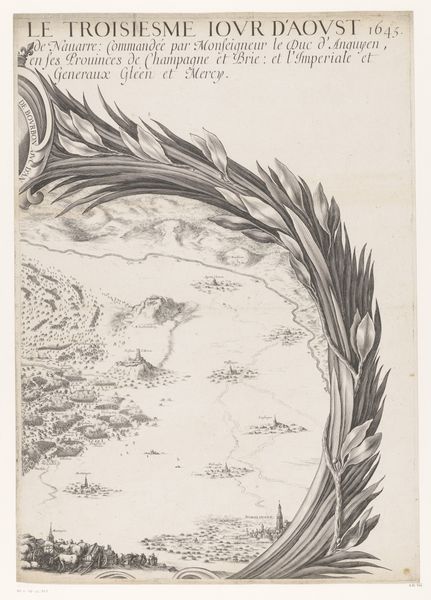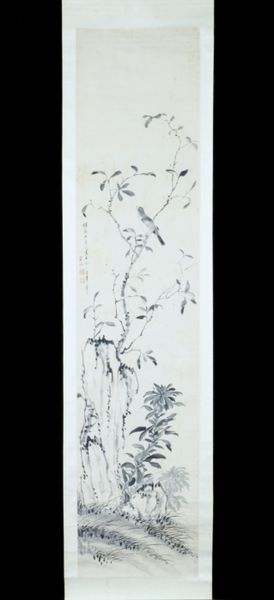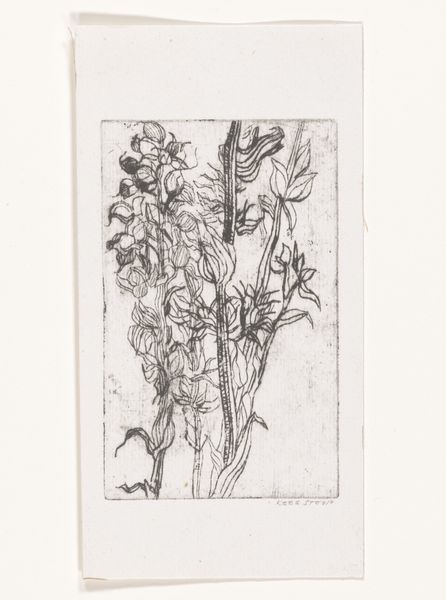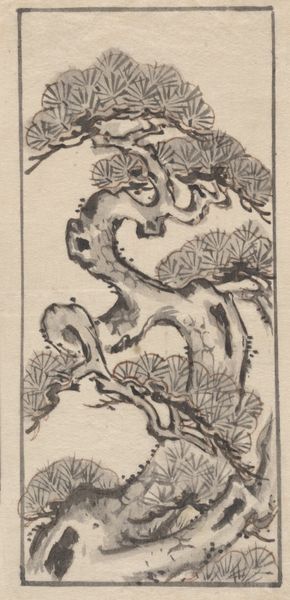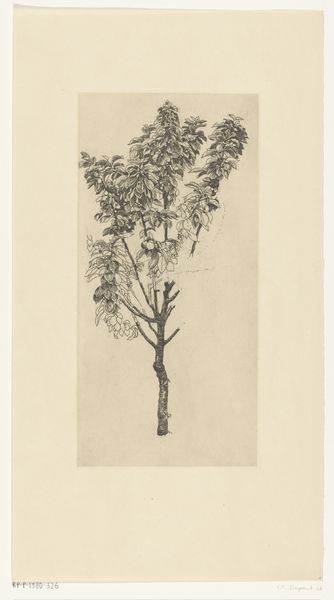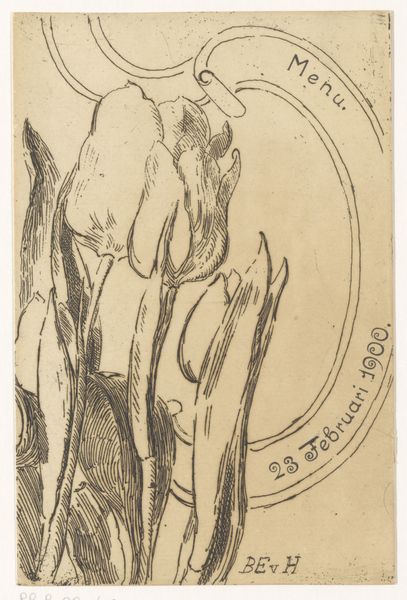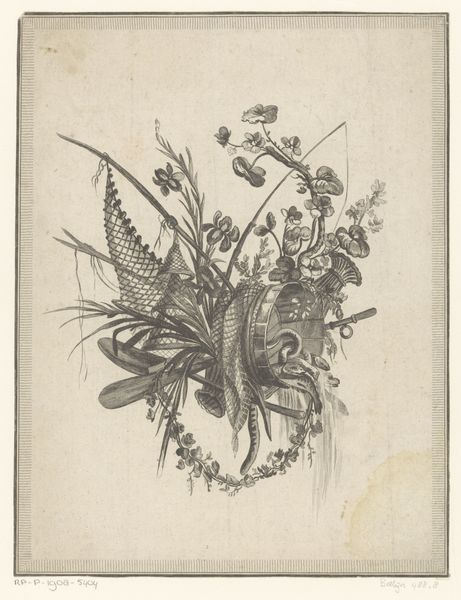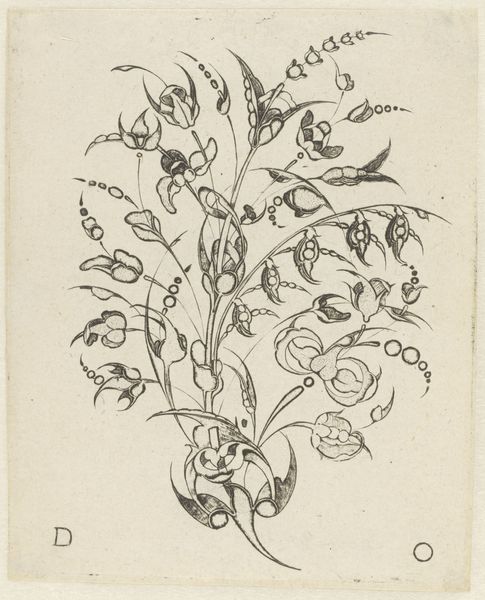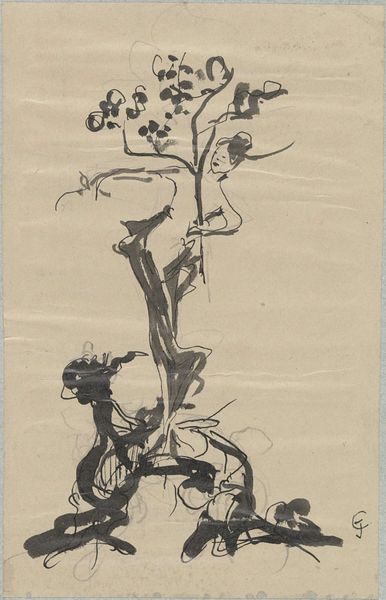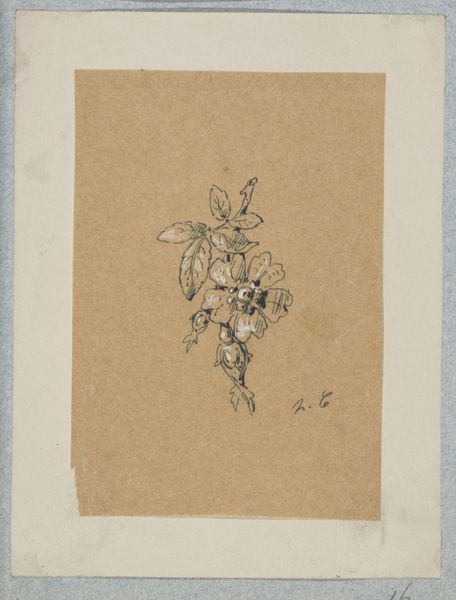
Casually Embracing I Fu-chiu's Ideas c. 19th century
0:00
0:00
drawing, paper, hanging-scroll, ink
#
drawing
#
ink drawing
#
pen drawing
#
asian-art
#
landscape
#
japan
#
paper
#
hanging-scroll
#
ink
#
line
#
calligraphy
Dimensions: 43 1/4 x 11 7/8 in. (109.86 x 30.16 cm) (image)
Copyright: Public Domain
Curator: Looking at this hanging scroll, it’s quite striking. The artist, Yamanaka Shinten’ô, likely created this ink drawing on paper in the 19th century, and it’s entitled "Casually Embracing I Fu-chiu's Ideas." What’s your immediate take? Editor: It feels sparse yet dense. The use of line, primarily, is what constructs the mountain landscape, creating depth through varying pressure and intensity. There's a very palpable visual rhythm. Curator: Precisely. The landscape depicted isn't just an objective representation; it's laden with meaning. I Fu-chiu was a known recluse and the work celebrates a kind of intellectual escapism and perhaps even comments on the life of the literati. The materials themselves – the readily available ink and paper – speak to a certain accessibility, yet the skill is undeniable. Editor: Yes, but I am also captured by the compositional decisions here. Observe how the verticality is emphasized by the elongated scroll format, enhancing the perceived height of the mountain. The artist employs a delicate balance between the detailed renderings of the lower rocky outcrop and the relative simplicity of the upper reaches, including the tree. Curator: This also echoes a core philosophy, doesn’t it? Simplicity can be found in complexity, and vice-versa. The landscape tradition was profoundly tied to Zen Buddhism, a religion with which this artist was likely deeply involved. This work exists not just as an isolated piece, but as part of an artistic economy in which painters sold paintings. Editor: Consider the calligraphy. It's not mere textual addition, it's integral. The forms and negative space within the script complement and mimic the landscape. The balance achieved creates unity. Curator: I concur entirely. And if we dig deeper into Shinten'ô's influences and the artistic climate of 19th century Japan, we see a clear intersection of cultural ideals and available means – cheap materials skillfully mastered. Editor: It prompts a closer look at how our visual experiences are structured through basic formal decisions. This exercise proves how, despite our varied angles, deep observations on the material choices, methods, or historical context of artwork only enrich how one values it. Curator: Indeed. There’s always more than one route into appreciating an artwork, even one rendered with such seemingly simple tools.
Comments
No comments
Be the first to comment and join the conversation on the ultimate creative platform.
